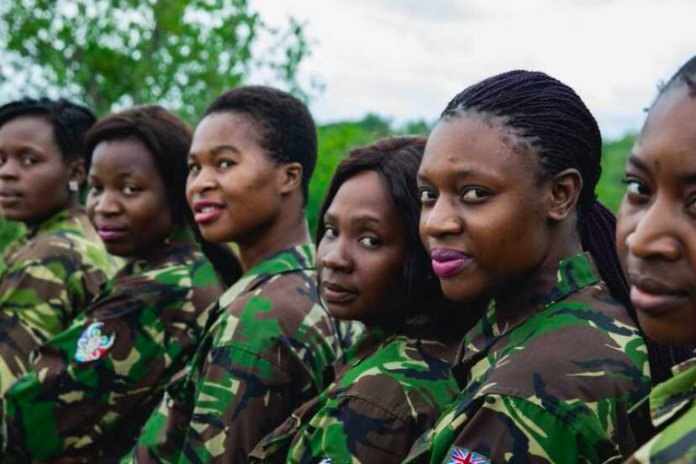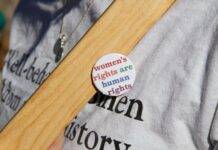As COVID-19 continues to wrack our lives, the topic of the illegal wildlife trade and its connection to the coronavirus has garnered recent headlines. Many organizations, such as the Wildlife Conservation Society, are taking proactive measures to step up their efforts to end this illegal trade of wildlife and prevent the risk of future zoonotic pandemics. But are these plans and policies considering the impacts of gender-based issues, such as sex-trafficking and forced labor, on the success or failure of the outcomes in these same spaces?
While these topics may seem unrelated, a critical new study by the International Union for Conservation of Nature (IUCN) shines a spotlight on the interconnection of women’s rights and environmental conservation. The report, Gender-based violence and environment linkages: The violence of inequality, provides an in-depth look at the pervasive problem of gender-based violence (GBV) and the relevance of this societal problem in three critical environmental contexts: (1) access to and control of natural resources; (2) ecological pressure and threats; (3) and environmental action to defend and conserve ecosystems and resources. The data in this report show that the issues are inextricably connected on a global scale, and preventing gender-based violence and promoting gender equality can meaningfully contribute to conservation work.

Around the world, estimates show that one in three women and girls will experience gender-based violence in their lifetime. This research by the IUCN finds that GBV “operates as a systematic means of control to enforce and protect existing patriarchal privileges concerning natural resources and environmental stewardship roles.” This violence against women gravely hinders conservation work within local communities by oppressing and excluding women and, in some cases, exposing them to increased risk of abuse. The report highlights that some of the most pressing issues the conservation movement seeks to tackle – such as logging, extractive practices, illegal wildlife trade, and climate change – are all deeply intertwined with gender-based violence across the globe.
Women in the communities where practitioners and researchers work have a finger on the pulse of their communities and possess unique perspectives on and solutions to the complex environmental issues they face. Eighty percent of earth’s biodiversity exists largely in communities located in the Global South. These societies tend to be where oppressive patriarchal structures are prevalent, and female voices are often silenced. These abusive frameworks intensify as community forests, livelihoods, and traditional ways of life disappear due to environmental degradation and climate change. As socioeconomic stress increases, these women suffer abuse at the hands of their male counterparts and are often put into dangerous circumstances to provide for themselves and their families. The interlinkages of GBV and conservation offer a crucial entry point to change the course of these negative male-dominated structures and empower female voices.
Poverty puts women in a tight spot as they have minimal or limited options for immediate protection from GBV due to their dependency on the perpetrators. Limited access to resources, including food, quickly gives way to heightened threats, creating increased possibility [for] conditions for abuse, and when the perpetrators continue to abuse them, they feel shy to report him again to the authorities.
– spokesperson, Dowa Police, Malawi (Gender Links, 2018)
Tackling GBV in these communities is a complex topic that is often culturally entrenched, place-based, and without a universal solution. While this challenge may seem monumental, progress is not impossible and is already happening across the globe.
The IUCN report presents many case studies exemplifying this progress, such as the unarmed ranger patrol group of local women called the “Black Mambas.” The group has achieved a 76 percent reduction in rhino poaching since 2013 in South Africa, a country whose president says is facing “a crisis of violence against women.” Poaching, as laid out in the IUCN report, has been found to impact communities, destabilizing them, and increasing violent crime, while less poaching results in safer communities for women and their families, and improves access to legally harvested natural resources, much of which is collected by women on a daily basis and impacting poverty rates. A member of the team shared her perspective on the power female units have had in shifting gender norms within the community:
“Unlike some years ago, when they used to say this job is for men, now there are women who are working to protect the wildlife. It means a lot to us and makes us continue to do our job because we know that people are behind us, supporting us”.
– Mogakane (Aldred, 2016)

These efforts illustrate the value of women’s participation in combating the illegal wildlife trade and the potential for decreasing tensions between communities, poachers, and wildlife protection forces. The IUCN report shows that where women have been trained and included in large numbers with ranger units, not only have altercations been reduced, but community perceptions concerning gender norms have shifted. This example in South Africa provides an opportunity for further research on how the reduction in GBV can improve and increase the success of programs and efforts to combat illegal wildlife trade globally.
I’m a white, cisgender male writing this piece in the white male-dominated field of conservation. We have a duty as conservation practitioners to diversify the field and ensure women and girls are empowered to participate in, and lead, environmental efforts safely.
The IUCN report is a warning which clearly shows that if we view humanity and nature as separate actors failing to address societal pressures operating in tandem with environmental challenges, progress towards meeting global environment and development goals may be impossible. Critics may argue this issue is one of human rights and not conservation, but I stress these two concepts “humanity” and “nature” are not separate. This global COVID-19 pandemic we are living through has shown this to be true.
The IUCN provides clear ways forward and excellent suggestions for further reading, and resources on each issue; in my opinion, this report should be mandatory reading for all folks working in this field. This pause in fieldwork for many of us allows for a reset and reflection on our perspectives and approaches.
When we emerge from our Zoom meetings and return to the communities on the frontlines, we must consider the weight of this reporting by the IUCN, and how GBV impacts our shared new future. Women, after all, are half of humanity, and if this virus has shown us anything, it is that we need everyone in this fight.
Tyler Nuckols is an early career conservationist and a graduate student in the global conservation leadership program at Colorado State University. His work focuses on innovative solutions to human-elephant conflict in SE Asia that work for both species. This article originally appeared in Mongabay.














